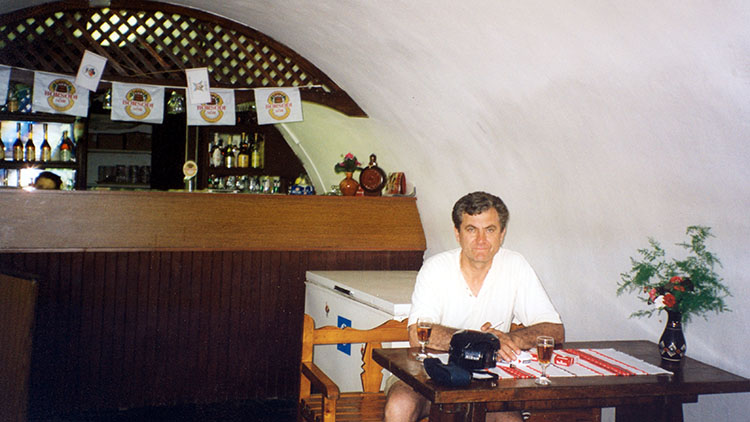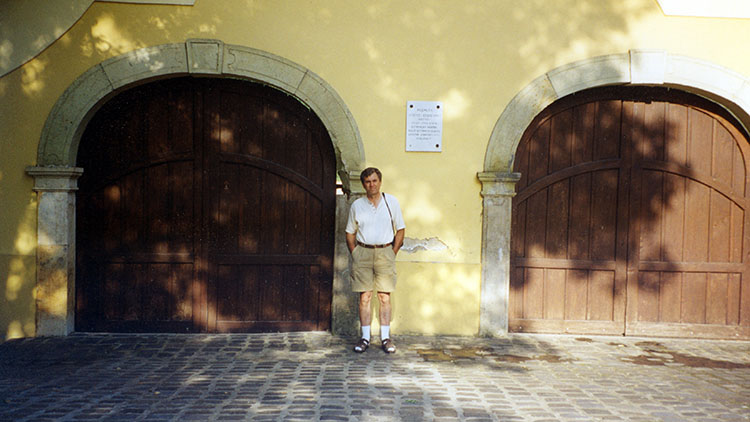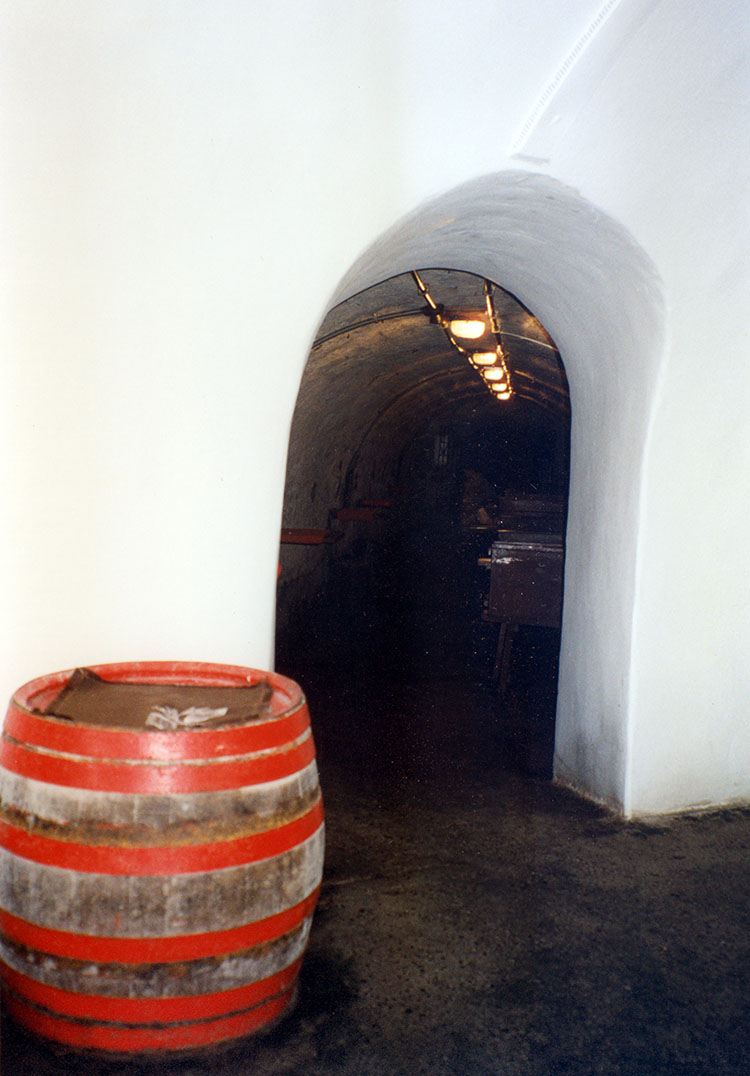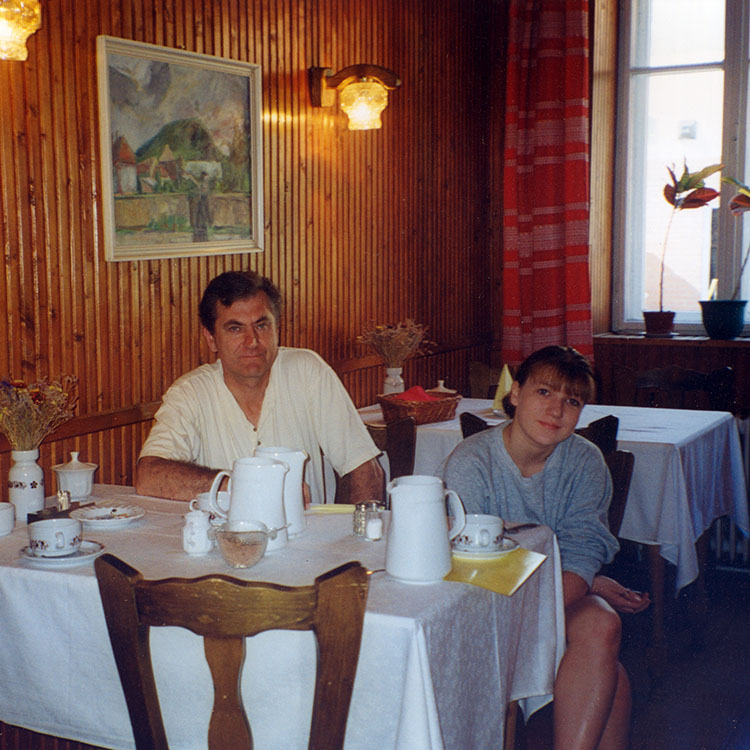
Sunday 19 July 1998
On our way to Tokaj we stopped at a roadside restaurant and had a hamburger and refreshments. Rachel also had ice cream. She was our official ice cream taster. Tasted ice cream in every country and every city in Europe. The hamburger was Rita’s favorite on the trip.
Arrived in Tokaj and checked in at the Tokaj hotel. The architect who designed the hotel must have been a very close relative of some high-ranking communist official, because he certainly didn’t know what the hell he was doing. Perfect example of incompetence and an example that Hungary was definitely not a meritocracy during the Communist era. You had to carry your luggage from the garage up a flight of stairs to the reception desk. Then after checking in, the luggage had to be carried up a flight of stairs, about ten steps, to get to the elevator which went up only one story. The hotel was musty smelling with dark hallways. Furniture was cheap antique, without the antique, but then we only paid $43 CAN. including breakfast. No complaints. Looking out the window we could see into our neighbors room, which was a stork’s nest on top of a telephone pole.
The Tisza River runs behind the hotel. It is said that Attila the Hun is buried somewhere beneath this river. According to the story, Attila was buried in three coffins, one nested inside the other; the outer was of iron, the middle was silver, and the inner was gold. The story goes, that his followers diverted the river, buried Attila, and then allowed the river to return to its course, and then they were all killed, forever concealing his burial location.
While Rachel slept we walked through the town which is famous for its Tokaji Aszu (A very sweet dessert wine). made from grapes affected by a fungus "noble rot" (Botrytis cinerea) which draws the water from the grape concentrating the sugar.
At one time, when sweet wines were popular, the Tokaj Eszenza was hailed to be the best wine in the world. Louie XIV was especially fond of this wine, so were the Russian czars, Queen Victoria had cases of it delivered to her each year. We visited the Hertz Castle in California in 1984, and one of their major attractions is the cellar that has a collection of Tokaji Aszu, It was thought to have healing powers and was used as medicine. But with today’s tastes it has lost favor, although it is still quite expensive.
Passed the building where Rákoczi lived. He was a famous leader of the Hungarian war of independence in the 18th century. The music you are hearing is the Rákoczi March from the Damnation of Faust by Berlioz.
We entered a cave that was being used as a tavern,
Had a glass of "hat putonos Tokaji Aszu". It was absolutely delicious, definitely my favorite. The price, $4.50 for a tiny glass, which was only half full. Same price as the 5 litter jug of Egri Bikavér we had purchased in Eger.
We walked around inside the cave which was also used as a restaurant. There were room sized openings along the cave walls large enough for a table and chairs, where people were having dinner. The cave was a semicircle and we exited at the other opening.
Went back to the hotel collected Rachel and went out for dinner. We found a restaurant just across the street on the banks of the Tisza. We took a table on the patio overlooking the river. I had "halász lé" (fish soup made with paprika). It started to get dark and the mosquitoes decided to have dinner also. We had to move inside the restaurant. The dinner was good and not very expensive. Then we went back to the hotel and had some of our "buck-a-liter" Egri bikavér.
Monday 20 July 1998
I went out to find a bottle of "hat putonos Tokaji Aszu" which we had tasted the day before. I found a small food store where they had all different qualities of Tokaj. Tokaj is graded by the amount of raisins, infected by "noble rot", that are added to the wine. "Hat putonyos" which means six buckets, is the highest quality and is not easy to find. It cost $30 CAN. for a tiny 375ml half bottle even in Hungary. The women in this town, unlike in Eger, have to rely on their natural beauty.
We had breakfast at the hotel, checked out and left Tokay heading for Kecskemét.
The bill, $43 CAN. for the room and three breakfasts, was not hard to take. This was the cheapest place we stayed in Europe.

.jpg)


